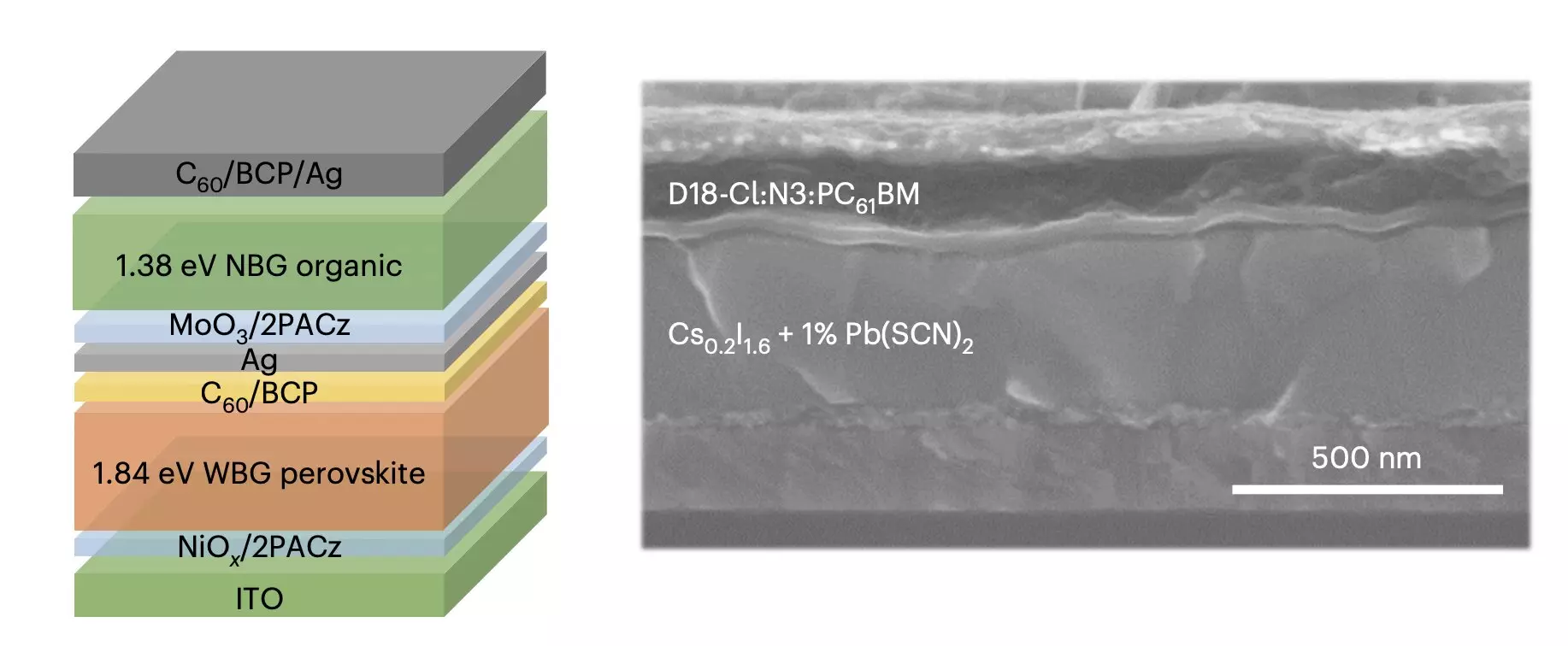Over the years, researchers have delved into a plethora of solar cell designs with the intention of facilitating their widespread use. One notable design that has garnered attention is organic solar cells based on perovskite materials. Unlike conventional silicon-based solar cells, organic solar cells offer advantages such as lower fabrication costs, increased flexibility, and tunability, making them an attractive option for the future of renewable energy.
While organic solar cells have shown promise, they have yet to match the power conversion efficiency (PCE) exhibited by silicon solar cells. One proposed strategy to enhance the efficiency and stability of organic solar cells involves combining them with cells based on mixed halide wide-bandgap perovskites, resulting in perovskite/organic tandem solar cells. However, a key challenge faced by researchers is phase segregation, which can degrade the performance of wide-bandgap perovskite cells, adversely impacting the recombination processes at the interconnecting layer of the tandem solar cells.
Researchers at Soochow University’s Suzhou Key Laboratory of Novel Semiconductor-optoelectronic materials and devices have recently developed a groundbreaking strategy to address phase segregation in wide-bandgap perovskites. In a study published in Nature Energy, Zhichao Zhang, Weijie Chen, and their team introduced a pseudo-triple-halide alloy into mixed halide perovskites based on iodine and bromine. This innovative approach aims to suppress phase segregation and enhance the performance and stability of perovskite/organic tandem cells.
The introduction of pseudo-halogen thiocyanate ions into iodine/bromide mixed halide perovskites has proven effective in preventing halide elements from separating within the solar cells. By slowing down crystallization and hindering ion migration, the thiocyanate ions facilitate the movement of electric charge within the solar cell. This method blocks halide ion migration through steric hindrance, ultimately reducing energy loss in wide-bandgap perovskite cells.
To validate the efficacy of their strategy in suppressing phase segregation, the researchers applied it to the development of perovskite/organic tandem solar cells. The initial tests yielded promising results, with the tandem solar cells achieving a PCE of 25.82%, a certified PCE of 25.06%, and an operational stability of 1,000 hours. This demonstrates the potential of the methodology introduced by Zhang, Chen, and their collaborators in enhancing the performance and stability of organic solar cells.
Looking ahead, the methodology developed by the researchers holds significant promise for the advancement of wide-bandgap perovskites with varying compositions. By tackling phase segregation and improving energy efficiency, this approach could pave the way for the development of highly efficient and stable perovskite/organic photovoltaics. These future innovations have the potential to operate under varying light intensities, achieve high PCEs, and maintain functionality over extended periods, marking a significant leap forward in renewable energy technologies.


Leave a Reply